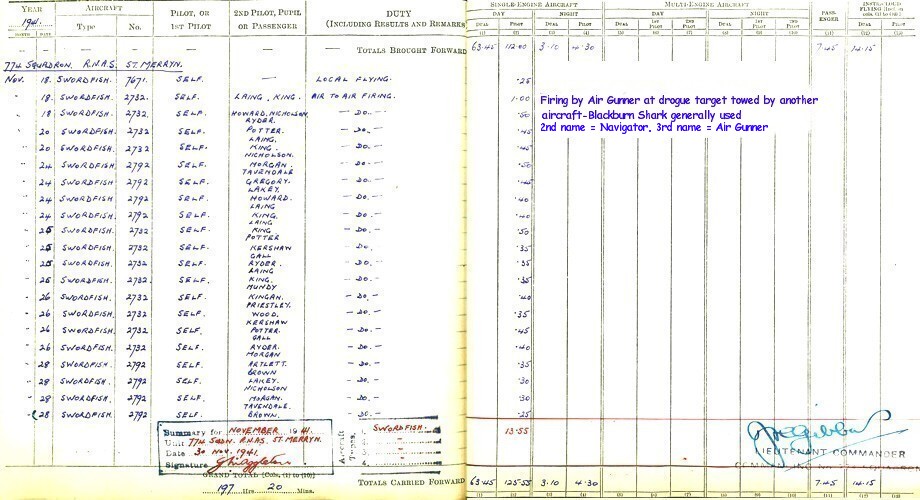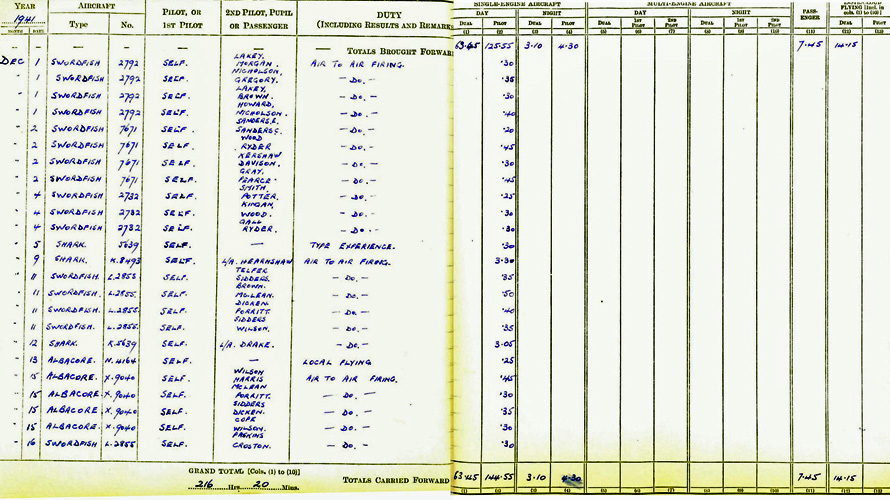|
|
|
|
|
|
|
|
|
|
|
|
|
|
|
GMA at Ilfracombe (staying with his parents) 1st November 1941 prior to joining 774 squadron |
|
|
|
774 Squadron at St Merryn, Cornwall |
|
|
|
Air Gunnery Course |
|
|
|
St Merryn (HMS Vulture) was opened in the summer of 1940 and developed into a training base for aircraft carrier fighters. The layout of the airfield differs from that of other bases. There are four short runways all facing opposite directions. This is because carriers were always pointed into the wind for aircraft take-off; the airfield is designed to allow take-offs whatever the wind direction. |
|
|
|
|
| Activities at St Merryn involved air-to-air, air-to-sea and air-to-ground gunnery practice. |
| The nearby bombing and gunnery range at Treligga was used for this purpose. |
| Ground targets were placed on the cliff edge. One of these is a set of concentric circles. |
| On the cliffs above this target is the main part of the range. |
|
|
|
|
|
|
 |
|
|
|
Blackburn Shark |
|
The Blackburn Shark was a pre-war carrier-borne torpedo-bomber and reconnaissance biplane, which also operated at coastal stations and as a seaplane. The Shark prototype was first flown on 24 August, 1933.The following year deck landing trails on the HMS Courageous proved successful and a first order from the Fleet Air Arm delivered in August 1934.The Shark was already becoming obsolete in 1937, and the following year replacement by the Fairey Swordfish began. At the beginning of WWII 165 were still on charge with the FAA in second-line units The Shark was finally retired in July 1944. No known preserved aircraft. |
|
|

|
|
The Blackburn Shark aircraft was used only for towing the target/drogue. |
|
|
|
Preserved Swordfish with Royal Navy Ensign markings |
|
|
 |